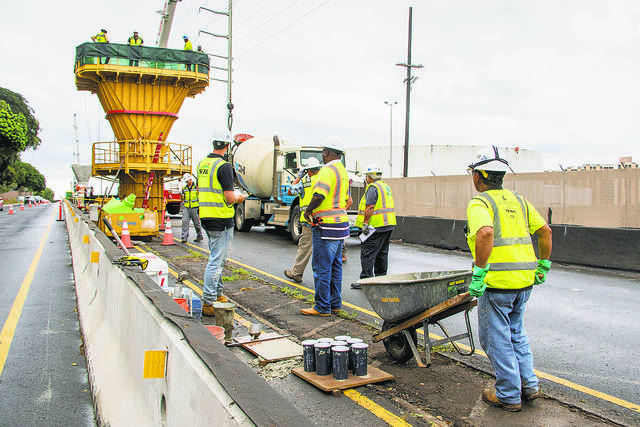The latest report on Honolulu’s troubled rail project by independent consultant Jacobs Engineering Group estimates the project will cost $8.3 billion, about $134 million more than the city’s current forecast, and possibly be fully operational nine months later than has been projected.
Damien Kim, Honolulu Authority for Rapid Transportation board chairman, and HART Executive Director Andrew Robbins say that’s good news because it’s close to what they’ve been estimating for the East Kapolei-to-Ala Moana Center project.
But others, including Mayor Kirk Caldwell and longtime rail critic Randall Roth, say the report raises new concerns that the HART board needs to address quickly.
The “risk refresh report” was done by Jacobs on behalf of the Federal Transit Administration. The FTA committed in December 2012 to providing $1.55 billion toward the project. But the FTA has withheld about $744 million of that, pending an acceptable project-recovery plan on how HART intends to address its rising costs.
The recovery plan was demanded by federal transit officials after the project’s estimated construction price tag leaped 55 percent since December 2014, when the cost was put at $5.3 billion. A final recovery plan was submitted last fall, and an FTA decision is pending.
HART has been projecting construction to come in at $8.2 billion before financing costs.
Agency officials insist they now have a better fix on costs and say the estimate had not gone up significantly since May 2016.
Jacobs was hired by the FTA in 2009 to monitor project construction, identify any problems and report deficiencies or concerns.
Among the conclusions of the 84-page Jacobs report:
>> There’s a 65 percent chance the project will be fully operational by September 2026, about nine months later than the December 2025 date that HART officials have been estimating.
>> It’s likely the project will cost $8.199 billion, about $134 million, or 1.6 percent, higher than HART has been projecting. Jacobs said that’s before financing costs that could add up to $855 million more.
>> Concerns raised include an inability to retain experienced staff people in key positions and uncertainty about whether the number of bidders competing for the remaining contracts “will be strong enough to assure pricing within budget.”
HART Board Chairman Damien Kim said that when using a different method to estimate construction costs, the Jacobs report “shows HART has gained control of the project’s costs.” Kim said HART already has put several of the report’s recommendations into place and plans to address the others.
Robbins, in the same statement, noted the report refers to the potential benefit from cost savings for the remaining city center section of the project, which has not been procured.
The HART board is expected to vote this month on whether to move forward with a plan to seek a business-sector partner through a public-private partnership, which Robbins said will provide more certainty for scheduling and timing for the project.
Caldwell said the greatest concern his administration found in the Jacobs report was the $134 million in additional costs.
The extension to the 0.5 percent, Oahu-only excise tax surcharge approved in September by the Legislature is good for only an additional three years, to 2030, leaving a $214 million gap for which the city is also on the hook. Caldwell blamed U.S. Rep. Colleen Hanabusa for convincing state lawmakers that any additional funding was not required.
Some of the cost-saving measures proposed by HART include delaying construction of some of the stations or other aspects of the project, he said, scenarios he does not support. “We’ve told the public for $8.16 billion you get 20 miles and 21 stations. … You should get what you pay for,” he said.
Retired University of Hawaii law Professor Randall Roth, a longtime rail critic, said he’s also troubled by the additional costs, particularly since Robbins, as late as a HART board meeting two weeks ago, was assuring board members no increases were forthcoming.
“He may not think $134 million is a whole lot of money, but it’s an awful lot of money, especially because there’ve been so many increases in the costs already.” Roth said. Critics, early on, weren’t expecting significant increases in cost estimates until the project reached Middle Street, he said.
He can’t understand how HART leaders could consider the report good news when it continued to raise concerns regarding the agency’s capacity and capability, Roth said.
Council Chairman Ernie Martin said he’s not surprised the report calls for “more skin in the game” from the city.
While “the additional amounts are well within the margins of HART’s own cost projections,” Council members need to be fully briefed on exactly how much more the city might need to invest, Martin said.
Council Budget Chairman Trevor Ozawa praised Robbins for making strides in accountability and transparency but said he also wants to use caution when approaching the idea of issuing city bonds.
Using city funding cannot come at the expense of core services like smooth roads and timely trash pickup, he said.

